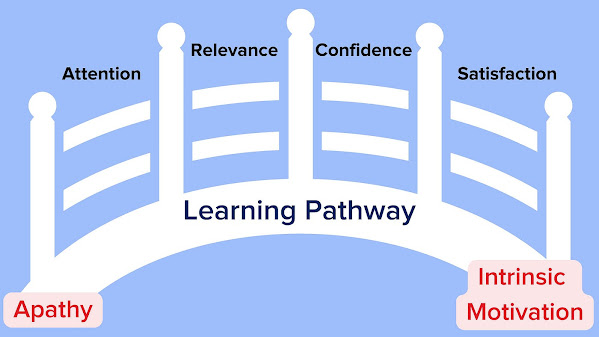Merging Motivation with Instructional Design
I found the topic of integrating motivation within instructional design very interesting. Is it a topic that I had not come across much through my research, and as a true educator, I feel that motivation plays a vital role within the field of education. Motivation is perhaps a topic that many do not consider, but when the learner is motivated in their learning experience, it becomes meaningful to them and will produce successful outcomes compared to a learner who is unmotivated. When it comes to instructional design, motivating learners must be a forethought in their design process because they should create an engaging and motivating learning experience. This topic currently is using a motivational design model by Dr. John Keller, known as ARCS. This model stands for Attention, Relevance, Confidence, and Satisfaction. It’s described as a problem-solving model and helps designers identify and solve specific motivational problems related to the appeal of instruction. The model was developed after a comprehensive review and synthesis of motivation concepts and research studies. It has also been validated in studies across different education levels ( B Online Learning, 2019).
The ARCS Model identifies four essential strategy components for motivating instruction (Small,1999):
[A]ttention strategies for arousing and sustaining curiosity and interest;
[R]elevance strategies that link to learners' needs, interests, and motives;
[C]onfidence strategies that help students develop a positive expectation for successful
achievement; and
[S]atisfaction strategies that provide extrinsic and intrinsic reinforcement for effort
Food for thought...
Refrences
Cheng, Y. C., & Yeh, H. T. (2009). From concepts of motivation to its application in instructional design: Reconsidering motivation from an instructional design perspective. British Journal of Educational Technology, 40(4), 597-605.
Integrating Motivation with Instructional Design. (2019, June 7). B Online Learning. https://bonlinelearning.com/integrating-motivation-with-instructional-design/
Small, R. V. (1999). Motivation in instructional design. Educational media and technology yearbook, 89-92.


Comments
Post a Comment